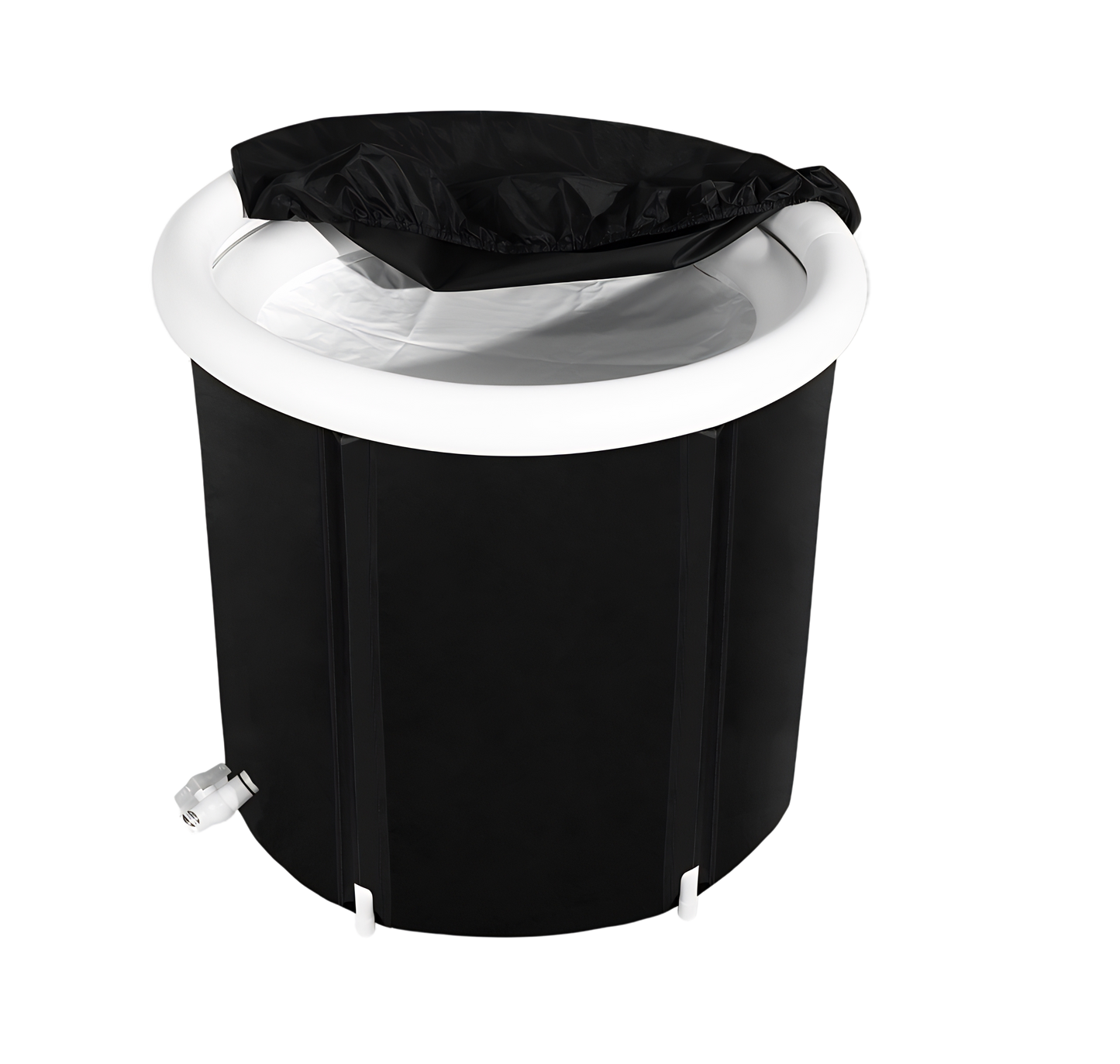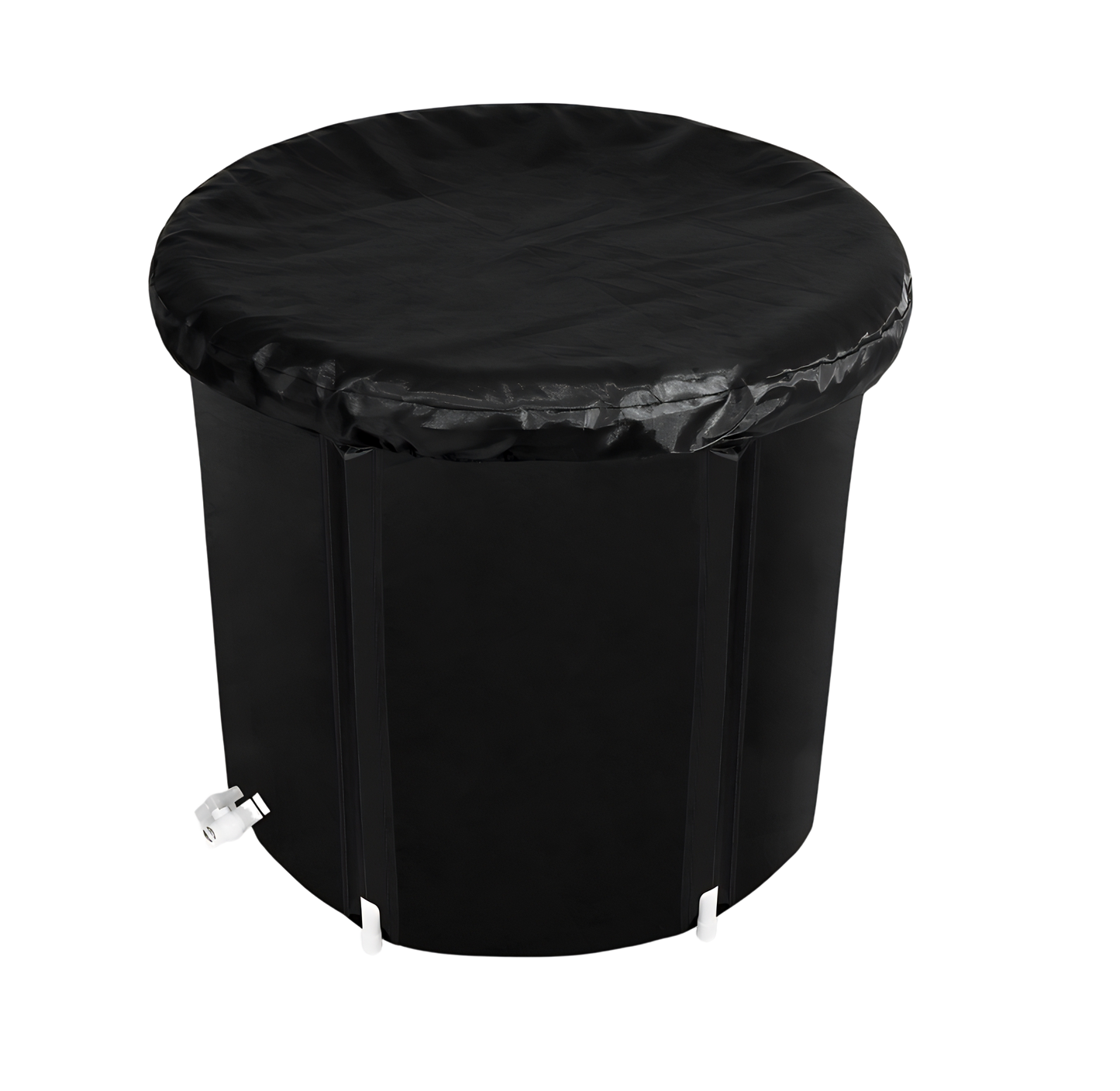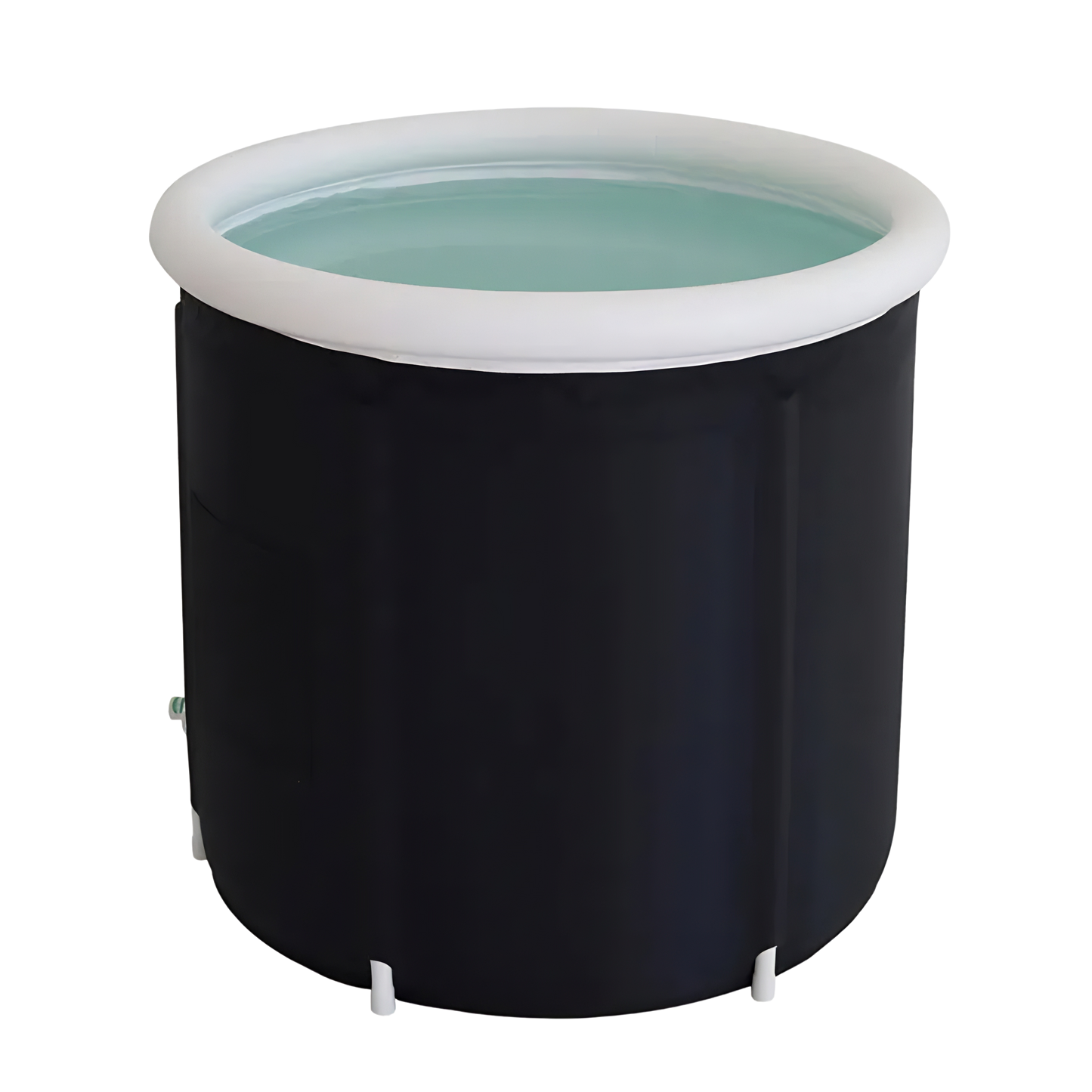Ice baths have long been touted as a popular post-workout recovery technique, believed to aid in muscle healing and reduce inflammation. But do they really live up to the hype? In this article, we delve into the science behind ice baths and their effectiveness in muscle recovery.
Key Takeaways
- Ice baths, also known as cold water immersion, involve sitting in chilly water for a specific duration.
- Some studies suggest ice baths may help reduce muscle soreness and inflammation after workouts.
- Individual responses to ice baths may vary, and further research is needed to fully understand their benefits.
- While ice baths are generally safe, it's important to be aware of potential risks and consult your doctor if you have any underlying medical conditions.
What Are Ice Baths?
Ice baths, also known as cold water immersion, involve sitting in chilly water, ideally up to your chest, for 10 to 15 minutes. The water temperature can be anywhere between 10 to 15 degrees Celsisus. Ice baths work by constricting blood vessels when you sit in cold water and then dilating them when you get out. This process helps flush away metabolic waste and increase blood flow, which is believed to aid in muscle recovery.
"Ice baths work by constricting blood vessels when you sit in cold water and then dilating them when you get out."
"This process helps flush away metabolic waste and increase blood flow, which is believed to aid in muscle recovery."
The Benefits of Ice Baths for Muscle Recovery

Ice baths, also known as cold water immersion, have been popular among athletes and fitness enthusiasts for their potential benefits in muscle recovery (Banfi et al., 2010; Bleakley et al., 2012; Ottone et al., 2014; Machado et al., 2016). While research on the effectiveness of ice baths is mixed, there are several potential advantages to incorporating this post-workout treatment into your routine.
Reduced Muscle Inflammation
One of the main purported benefits of ice baths is their ability to reduce muscle inflammation . After an intense workout, muscles can become inflamed due to microscopic damage and the release of inflammatory markers. Cold water immersion is believed to constrict blood vessels, reducing blood flow to the muscles and limiting inflammation. Additionally, the cold temperature may help numb the muscles and provide temporary pain relief.
A study by Lombardi et al. (2020) found that whole-body cryotherapy sessions can influence muscle and inflammation markers, with responses varying based on the individual's fitness level. Notably, myostatin levels, which inhibit muscle growth, changed significantly in less fit individuals, while vitamin D levels increased in fitter subjects, suggesting that physical fitness may affect the body's reaction to cold treatments.
Faster Muscle Healing
Ice baths may also potentially enhance muscle healing by promoting blood circulation and flushing out metabolic waste. The cold water causes blood vessels to constrict, reducing swelling and allowing fresh oxygenated blood to flow to the muscles once the body warms up again. This increased blood flow can aid in the delivery of nutrients and removal of waste products, potentially speeding up the recovery process.
Reduced Muscle Soreness
Another claimed benefit of ice baths is the reduction of muscle soreness following intense exercise. The cold temperature is thought to help numb the muscles and alleviate soreness by limiting the transmission of pain signals. Additionally, the vasoconstriction caused by the cold water immersion may help reduce the accumulation of lactic acid, a byproduct of intense exercise that can contribute to muscle soreness.
| Benefits of Ice Baths | Summary |
|---|---|
| Reduced Muscle Inflammation | Ice baths may help reduce muscle inflammation by constricting blood vessels and limiting blood flow to the muscles. |
| Faster Muscle Healing | The increased blood circulation stimulated by ice baths can aid in the delivery of nutrients and removal of waste products, potentially speeding up the muscle healing process. |
| Reduced Muscle Soreness | The cold temperature of ice baths may help numb the muscles and limit the transmission of pain signals, reducing muscle soreness after intense exercise. |
While ice baths may offer some potential benefits for muscle recovery, it's important to note that individual responses can vary. Some studies have shown that ice baths are not more effective than active recovery methods in reducing inflammation or muscle soreness. It's also essential to consider the potential risks and consult with a healthcare professional before incorporating ice baths into your post-workout routine.
The Potential Risks of Ice Baths
While ice baths are generally considered safe, it's important to be aware of the potential risks associated with cold therapy for muscle recovery.
Hypothermia Risk
Prolonged exposure to cold water can lead to hypothermia, a serious condition that occurs when the body loses heat faster than it can produce it. This can result in a dangerously low body temperature, which can affect bodily functions and lead to life-threatening complications. To minimize the risk of hypothermia, it's crucial to limit the duration of your ice baths and ensure the water temperature is within a safe range.
Cardiovascular Health Concerns
Individuals with high blood pressure or cardiovascular disease should consult their doctors before attempting ice baths. The sudden immersion in cold water and the constriction and dilation of blood vessels that occur during the ice bath can put additional strain on the cardiovascular system. It's essential to prioritize the safety of your heart and seek medical advice if you have any underlying cardiovascular conditions.
Monitoring and Discomfort
During an ice bath, it's vital to continuously monitor the water temperature to ensure it remains within the recommended range. If the water becomes too cold, it can increase the risk of hypothermia. Additionally, individuals may experience discomfort or adverse effects during or after the ice bath. If you feel any unusual symptoms or discomfort, it's important to discontinue the use of ice baths and seek medical advice.
By being aware of these potential risks and taking necessary precautions, individuals can safely incorporate ice baths into their muscle recovery routine. However, it's crucial to listen to your body, consult with a healthcare professional, and consider alternative recovery methods if you have any concerns or pre-existing conditions.
How to Take an Ice Bath
Cold water immersion, commonly known as ice baths, is a popular method for muscle recovery after intense exercise. Taking an ice bath can help reduce muscle soreness and inflammation, promoting faster recovery. Here are the steps to properly take an ice bath:
- Fill your portable ice bath with cold water.
- Add bags of ice, 2 to 3 bags is a good starting point, add more if you are feeling game (Note: add bags of ice after it has filled up to avoid them melting before you get in).
- Immerse your body into the cold water, ideally up to your chest. This allows for maximum exposure and coverage of the muscles.
- Stay in the ice bath for 3 to 5 minutes. However, it's important to listen to your body and adjust the duration according to your comfort level. If you start feeling too cold or uncomfortable, it's okay to end the ice bath earlier.
- After the allotted time, carefully step out of the ice bath and dry yourself off.
Some athletes find it helpful to perform dynamic stretches or light exercises after an ice bath to promote blood flow and further enhance muscle recovery. However, it's worth noting that individual responses to ice baths may vary, so it's essential to find what works best for your body.
Remember to consult with a healthcare professional if you have any underlying health conditions or concerns before attempting an ice bath. It's crucial to prioritize your safety and well-being throughout the recovery process.

Safety Precautions
While ice baths can be effective for muscle recovery, it's important to be mindful of the following safety precautions:
- If you have high blood pressure or cardiovascular disease, consult with your doctor before trying an ice bath to ensure it is safe for you.
- Monitor the water temperature during the ice bath to ensure it stays within the recommended range. Using a thermometer can help you maintain an appropriate temperature.
- Limit the duration of your ice bath to avoid prolonged exposure to cold water, as this can lead to hypothermia.
- If you experience any discomfort, pain, or adverse effects during or after an ice bath, discontinue its use and seek medical advice.
Conclusion
Ice baths have been a popular post-workout recovery strategy, but their effectiveness is still debated. While some studies suggest potential benefits for reducing muscle soreness and inflammation, other research has shown no significant difference compared to active recovery. It's clear that more research is needed to fully understand the physiological mechanisms behind cold water immersion and its impact on muscle recovery.
The future of cold-application techniques in muscle recovery may involve exploring other cryotherapy methods, such as contrast water therapy. This technique alternates between immersions in warm and cold water to potentially enhance blood flow and aid in recovery. By investigating these different approaches, we may discover more effective strategies for optimizing muscle healing and reducing post-workout discomfort.
As with any recovery strategy, it's important to find what works best for your body. Keep in mind that individual responses to ice baths and other cold-application techniques may vary. Consulting with a healthcare professional can provide personalized guidance and help address any concerns or potential risks related to cold therapy. Embracing a holistic approach to muscle recovery will continue to evolve, and cryotherapy may play a significant role in the future of optimizing athletic performance.
FAQ
How do ice baths work for muscle recovery?
Ice baths work by constricting blood vessels when you sit in cold water and then dilating them when you get out. This process helps flush away metabolic waste and increase blood flow, which is believed to aid in muscle recovery.
Do ice baths help reduce muscle soreness and inflammation?
Some studies suggest that ice baths may help reduce muscle soreness and inflammation after workouts. Cold water immersion can lower the perception of pain and improve the sensation of well-being. It may also enhance recovery by improving blood flow and flushing out metabolic waste. However, the research on the benefits of ice baths for muscle recovery is mixed.
Are ice baths safe for everyone to use?
While ice baths are generally considered safe, people with high blood pressure or cardiovascular disease should consult their doctors before trying ice baths. Prolonged exposure to cold water can lead to hypothermia, so it's important to limit the duration of your ice bath. It's also essential to monitor the water temperature and ensure it is within a safe range.
How do I take an ice bath?
To take an ice bath, fill your portable ice bath with cold water, add a few bags of ice, and immerse your body up to your chest. It's recommended to stay in the ice bath for 10 to 15 minutes. However, individual tolerance and comfort levels may vary, so it's important to listen to your body. After the ice bath, dry off and warm up gradually.
Are there alternative methods to ice baths for muscle recovery?
The future of cold-application techniques in muscle recovery may involve further research into the physiological mechanisms and exploring other cryotherapy methods such as contrast water therapy. As with any recovery strategy, it's important to find what works best for your body and consult with a healthcare professional if you have any concerns.






